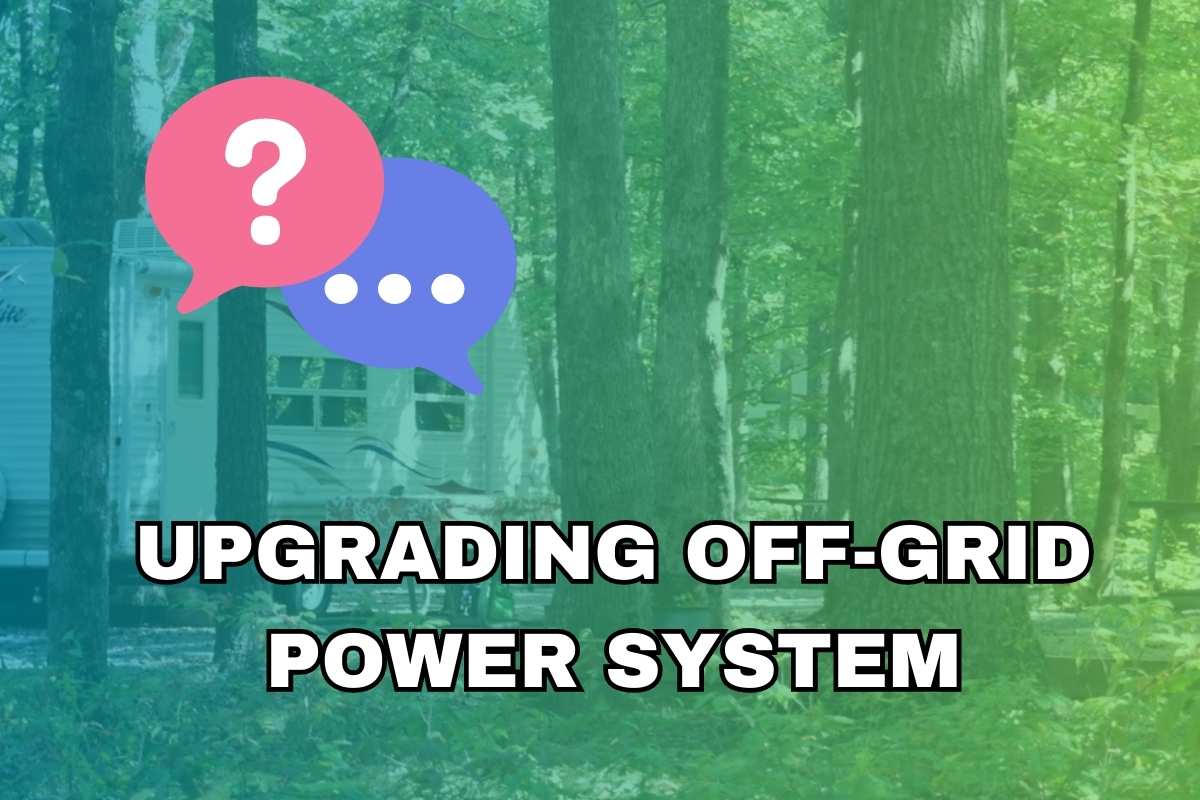Question for reader on 2022 Thor Chateau 27R:
** Hello, I own a 2022 Thor Chateau 27R. This unit came with a single solar panel on the roof, along with a small 10amp Go Power Solar Charge Controller. There is (1) house battery but this battery does not power my tv or outlets. I am interested in adding additional solar panels on the roof, along with a new solar controller, 2-3 batteries and an inverter large enough so that I can power my outlets, tv and more importantly, my 15,000 BTU A/C unit when needed. I am assuming a 3,000 watt inverter would be sufficient but I am not sure. In addition, I have my on board generator which can be used in emergency situations but I am trying to avoid it if possible. We usually just stay a night or two at a campsite but would like the flexibility to stay longer if possible. Do you have any recommendations for my application? Thanks. **
Thanks for the question. I think you are wanting to be able to do more off-grid camping. Luckily you hjave decent equipment to get started with in your RV. You should have plenty of roof space to add more solar and you already have a generator. Running the AC is going to be tough without a lithium battery bank and an inverter charger.
This is because 15000 BTU rooftop airs use a lot of power. A typical RV rooftop air conditioner with a capacity of 15,000 BTU can consume anywhere from 1,200 to 1,800 watts while running. For a 12 volt RV system, this equates to 100 to 150 amps of draw continously on the battery bank. Depending on factors like efficiency, ambient temperature, and the unit’s age, the power consumption might vary slightly. Running continuously, it can use 28.8 to 43.2 kWh over a 24-hour period. Given the high power demand, it’s crucial for RV owners to have a sufficiently sized battery bank, reliable on-board generator and/or access to shore power when operating such an air conditioner for extended periods to prevent draining the battery quickly.
If short runtimes are ok with some generator time consider starting with a good inverter/charger to handle your AC side when off-grid.
Integrating a 500 to 1000 amp-hour lithium battery bank into your RV setup is essential when considering consistent power needs, especially for energy-hungry appliances like a 15k BTU air conditioner. Such a substantial battery capacity ensures longer periods of off-grid autonomy, reducing the frequency of recharges. The lightweight and compact nature of lithium batteries, compared to traditional lead-acid batteries, allows for space conservation and less added weight. Additionally, with a robust battery management system (BMS) typically found in these lithium banks, you benefit from enhanced safety and longer battery life. This sizable battery investment ensures a comfortable and uninterrupted RV experience.
A 15,000 BTU RV air conditioner typically consumes between 1,200 to 1,800 watts. For a 12V, 1000 amp-hour lithium battery bank, you effectively have 12,000 watt-hours (or 12 kWh) of energy. Given the air conditioner’s consumption, if it runs continuously, it would deplete the battery in 6.67 to 7 hours. However, real-world usage in cooler environments often involves cycling the air conditioner on and off, potentially extending the operational hours. It’s crucial to account for other appliances or systems drawing power from the battery bank. In practice, a fully charged 1000 amp-hour lithium battery could feasibly support a 15,000 BTU air conditioner for a full day’s intermittent use. When its 90+ degrees, try and find a place to plug in.
Your Thor Chateau, given its robust build and design, should comfortably accommodate additional 190-watt solar panels. However, to harness the full potential of the increased solar capacity, transitioning to a larger MPPT (Maximum Power Point Tracking) charge controller is essential. MPPT controllers offer superior efficiency and can adapt to varying light conditions, ensuring that your battery bank receives optimal charging. It’s a crucial step to consider for maximizing energy input while safeguarding your system’s longevity.
